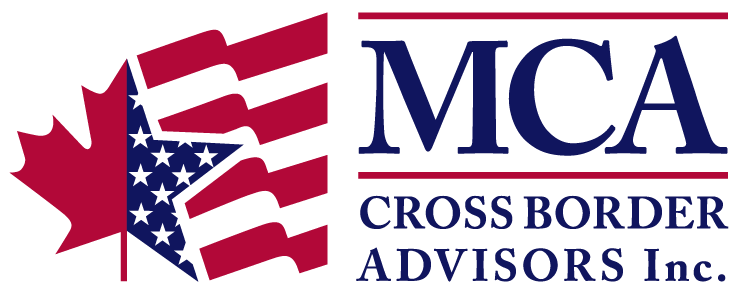In our globalized world, corporate relocation of employees between Canada and the U.S. is becoming more common. Mobilizing talent across borders is often a key strategy for companies hoping to maximize their human resources, but compliance with laws on both sides of the border can be challenging. Luckily, by considering tax and estate planning issues before an employee moves, the risks of relocation can be mitigated.
Tax Residency
A central issue is tax residency. Canadian income tax is based on residency, while the U.S. generally taxes its citizens on their worldwide income even if they are non-residents. Resident aliens (non-citizens) of the U.S. are also taxed on worldwide income, as if they are U.S. citizens (non-resident aliens are typically only taxed on their U.S.-source income).
If Canadian employees temporarily relocated to the U.S. pass the U.S. substantial presence test, they can be deemed resident aliens for tax purposes. This can cause the unfortunate effect of deeming a transferred employee as a tax resident of both Canada and the U.S. Without professional guidance this may result in potential Canadian departure tax and potential double taxation on certain income.
While the Canada-U.S. Tax Treaty contains rules to help determine a singular tax residency for those employees who would otherwise be subject to double taxation, the application of the rules might inadvertently cause an employee to be deemed a tax resident of the jurisdiction that is less tax-advantageous for them. The factors used to determine tax residency under the treaty are the location of the employee’s permanent residence, the centre of their personal and economic relations, habitual abode and citizenship. With proper advance planning before relocation, employees can avoid being subject to these factors by making proactive decisions that will allow them to either keep their current tax residency or choose a new one depending on what will be most tax-advantageous given their unique situation.
Departure Tax
For Canadian employees relocating to the U.S., it is also important to consider Canadian departure tax. Once deemed a non-resident of Canada, the Canada Revenue Agency (CRA) applies departure tax to certain assets which will be deemed to be disposed of at their current fair market value, creating a potential capital gains tax. While not all assets are subject to departure tax (Canadian-situated real estate, RRSPs and RRIFs are all exempt from departure tax, for example), assets such as stocks and certain personal property are subject to departure tax and can cause significant tax burdens for Canadian employees relocating to the U.S. who become non-residents of Canada.
U.S. Estate Tax
The IRS levies U.S. estate tax on all U.S. residents’ worldwide assets, so if a Canadian employee becomes a U.S. resident once transferred across the border, his or her worldwide assets may be caught in the U.S. estate tax net. Estate planning can be done in advance, however, in order to structure assets so that they are not subject to U.S. estate tax later. It is important to note that those transferred employees who maintain Canadian tax residency might still be subject to U.S. estate tax on any U.S. situs assets that they acquire while abroad if their worldwide assets are valued at more than $5.34 million (the current U.S. estate tax exemption for 2014) and their U.S. assets are worth $60,000 USD or more.
Planning and Solutions
If Canadian employees are only being temporarily relocated, it might be best for them to maintain ties with Canada in order to avoid departure tax and exposure to U.S. estate tax on worldwide assets, for example. On the other hand, if an exit from Canada is properly planned, employees who relocate may achieve significant tax savings since U.S. income tax rates are lower than Canadian rates. In addition, after a Canadian exits from Canada, he or she may be able to withdraw his or her RRSP at a lower tax rate as a non-resident than as a resident. However, whether an employee should maintain or cut his or her Canadian tax residency ties depends on the employee’s specific circumstances.
For employees being permanently relocated, it is ideal to plan for 6-12 months prior to relocation in order to benefit from available financial, tax and estate planning solutions.
Proper planning ensures a smooth transition for employers and employees so that business immigration remains an opportunity for growth rather than a financial headache for all.

